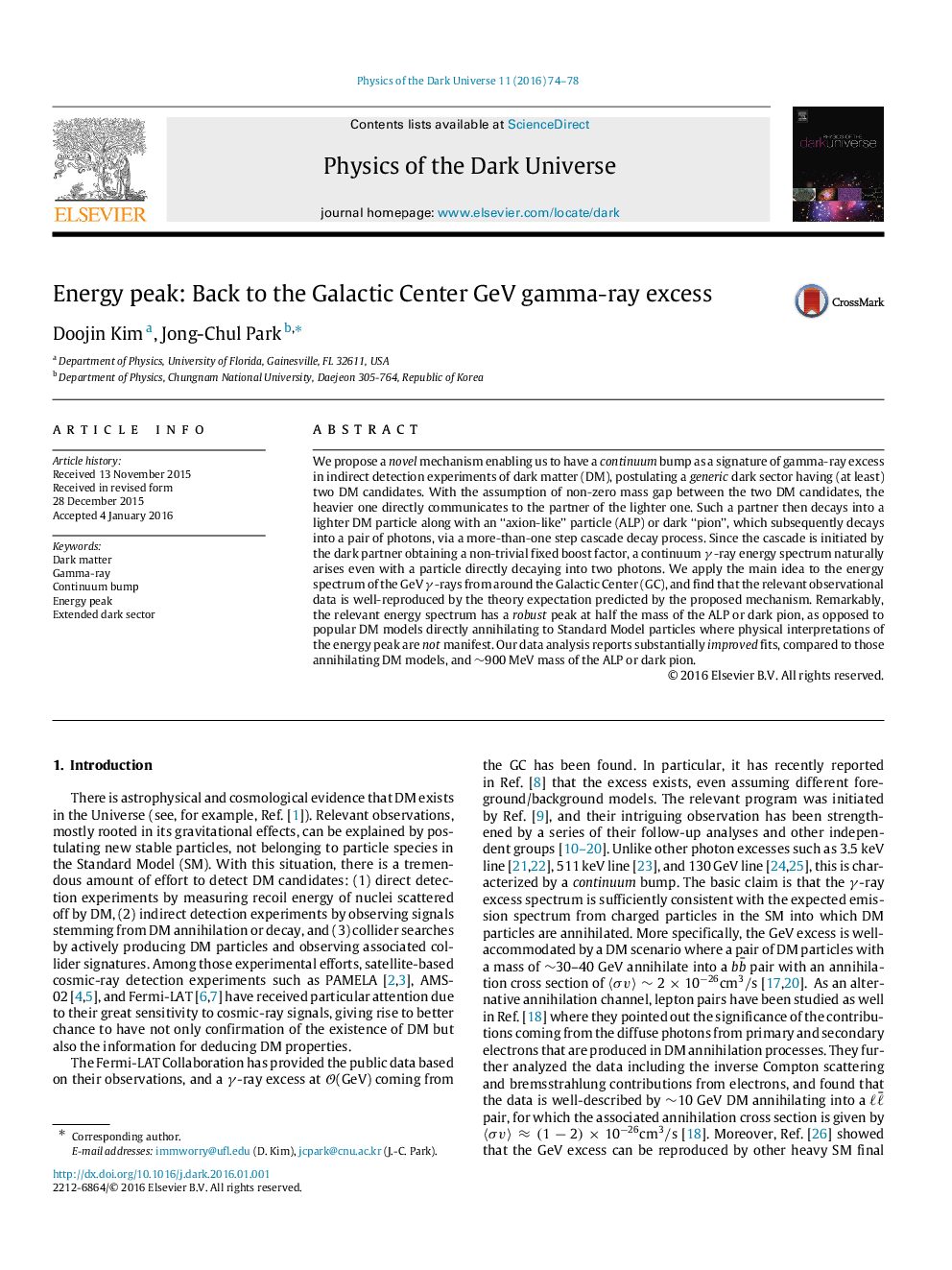| Article ID | Journal | Published Year | Pages | File Type |
|---|---|---|---|---|
| 1780741 | Physics of the Dark Universe | 2016 | 5 Pages |
We propose a novel mechanism enabling us to have a continuum bump as a signature of gamma-ray excess in indirect detection experiments of dark matter (DM), postulating a generic dark sector having (at least) two DM candidates. With the assumption of non-zero mass gap between the two DM candidates, the heavier one directly communicates to the partner of the lighter one. Such a partner then decays into a lighter DM particle along with an “axion-like” particle (ALP) or dark “pion”, which subsequently decays into a pair of photons, via a more-than-one step cascade decay process. Since the cascade is initiated by the dark partner obtaining a non-trivial fixed boost factor, a continuum γγ-ray energy spectrum naturally arises even with a particle directly decaying into two photons. We apply the main idea to the energy spectrum of the GeV γγ-rays from around the Galactic Center (GC), and find that the relevant observational data is well-reproduced by the theory expectation predicted by the proposed mechanism. Remarkably, the relevant energy spectrum has a robust peak at half the mass of the ALP or dark pion, as opposed to popular DM models directly annihilating to Standard Model particles where physical interpretations of the energy peak are not manifest. Our data analysis reports substantially improved fits, compared to those annihilating DM models, and ∼900MeV mass of the ALP or dark pion.
